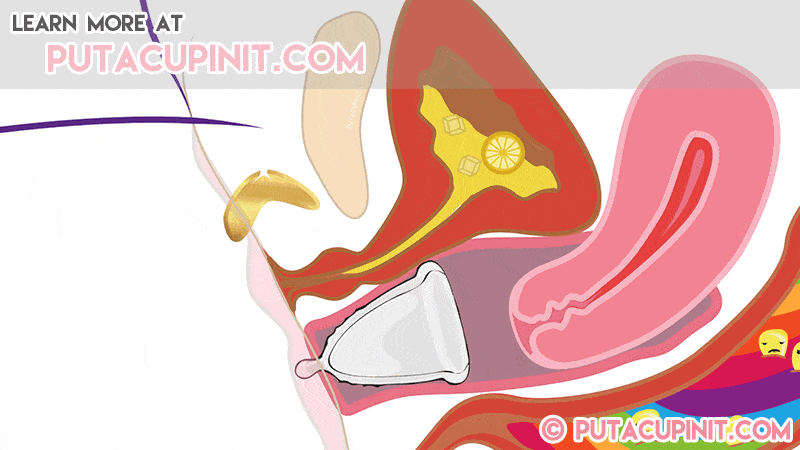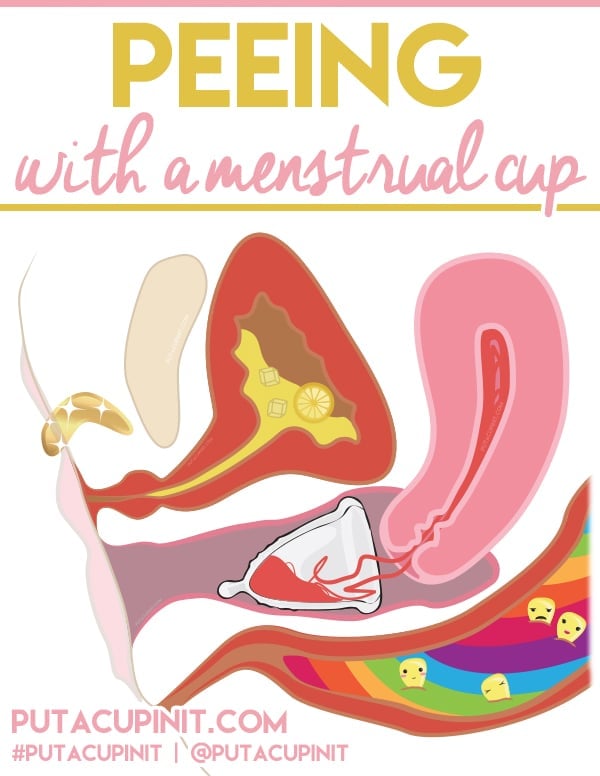Even though we chuckle at the comments left on our YouTube videos that ask “how can I pee with a menstrual cup in?” there IS something about urination that should be discussed more often when discussing cups.
First Things First: We have 3 holes.
Yes, you heard it here. We have three output holes: the urethra, the vagina, and the anus. Your menstrual cup is inserted into the vagina, so theoretically there is no interference with urination; they’re two separate holes and a cup will neither catch nor block your urine.
However, it is possible for menstrual cups to apply pressure to the bladder or urethra. This is an experience that most individuals have to varying degrees. If it causes discomfort it can be frustration to know how to articulate, to get help, or solve the issue.
We have taken the liberty of making a video that should explain these annoyances. We hope you will watch and learn! Or laugh.
This graphic above should help make it a bit clearer where the cup sits in relation to the bladder/urethra and why it may cause pressure. You’ll know this is a problem if peeing with a menstrual cup takes longer than usual and/or your urine stream is slower. You may also feel the urge to pee more frequently while you’re wearing your cup.
Can it be fixed?
Before you jump into a new cup, consider trying a different placement with your current cup (higher or lower in the vagincal canal) or flipping it inside out. A different shape or position may be enough to help if the pressure is a minor annoyance.
 Bladder Pressure
Bladder Pressure
 Urethral Pressure
Urethral Pressure
If you find that you simply cannot resolve the issue with your current cup you can most likely address the issue with another menstrual cup. Consider a cup that sits lower inside the vaginal canal, has a less pronounced rim (like Lily Cup) or is made from a softer type of silicone or TPE (like Super Jennie, Sckoon, or Lena Sensitive). You may also want to check out the new Tampax Cup which has been designed to address the problem of bladder pressure.
Related: Tampax Cup Review
You don’t have to stop using the cup you currently have if you aren’t bothered by slower urination or bladder pressure. (It’s inconvenient if you need to pee in a hurry but personally I’ve never been bothered enough to use a softer cup since firmer is easier for me).
Can Menstrual Cups Cause UTI’s?
UTI’s (urinary tract infections) are an annoying and occur when bacteria gets into your urine and travels up to your bladder. Usually the cause is related to hygiene when wiping or not urinating after sexual intercourse. As it relates to menstrual cups if your cup is restricting urine and not allowing you to fully empty your bladder this may contribute to a UTI in some instances, though rare. If you are a cup user who has experienced slower urinination or bladder pressure while wearing your cup and you and contract a UTI it’s best to switch to a softer cup.
Related: Soft Menstrual Cups- a Guide









28 Responses
While peeing, I notice that it has blood on my urine even though a cup has been inserted. Is it normal or I might have incorrectly inserted my cup?